I see a lot of rifles and shotguns. Mot of the time they are of familiar patterns and types but every now and again one arrives that is slightly outside the normal range and requires a little investigation. This of course, is part of the education that goes along with working in a particular field. Every day is a school day, if you are curious.
Just such a rifle arrived recently, along with a collection of rook rifles. This one, however, was much bigger and for a different purpose. Initial examination revealed a 30 inch round barrel with flattened top, creating a flat-rib sighting plane, upon which was mounted a set of floating leaf sights, graduated to 100, 150 and 200 yards. It has seven-groove rifling. The side of the barrel is stamped 112 and 648 and 450. The last number apparently indicates the calibre. The guard strap carries an engraved serial number; 6247.
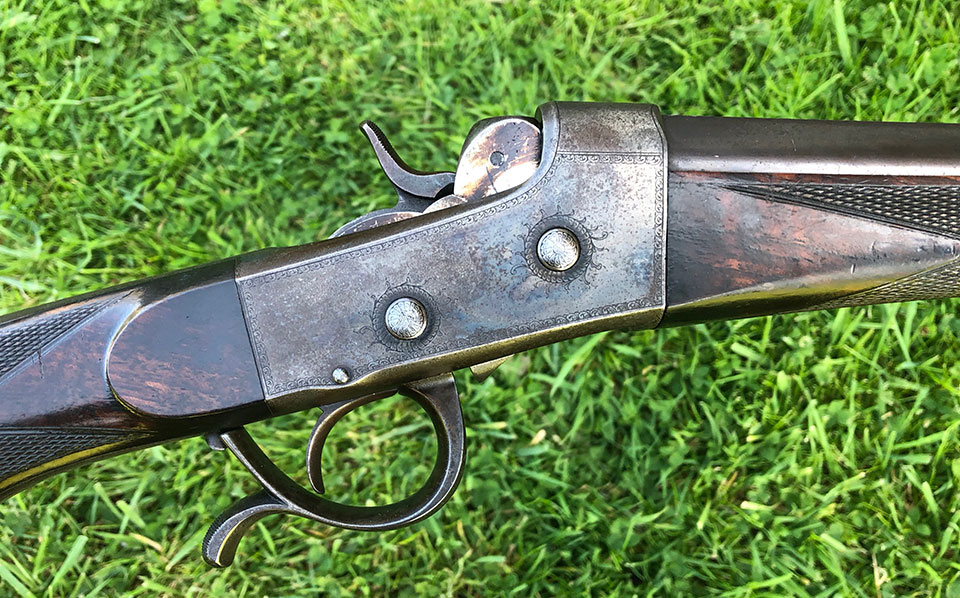
The, mostly plain, action does have neat border engraving and further engraving on, and around, pins and pivots. The engraving is finely executed and artistic, not the hasty scratches often seen on cheap guns. Further indications of quality are the fine execution of the numbers and letters on the serial number and maker’s name, though both are discreetly placed, the former on the flattened top of the action, where it meets the barrel. The name is ‘ARMY & NAVY CSL’.
Army & Navy (CSL is for Co-operative Society Ltd) is one of those names that the layman often dismisses as a purveyor of lower quality Birmingham guns to the servants and officers of Empire. Indeed, it was. But that is not all it was.
The company was incorporated in 1871 and in 1973 it was absorbed into The House of Fraser. Army & Navy once had its flagship store in Victoria Street, London and from there, it kitted out service personnel for their lives abroad. Between 1890 and 1930 it opened several further stores in India, to serve the Raj and its ex-pat community.
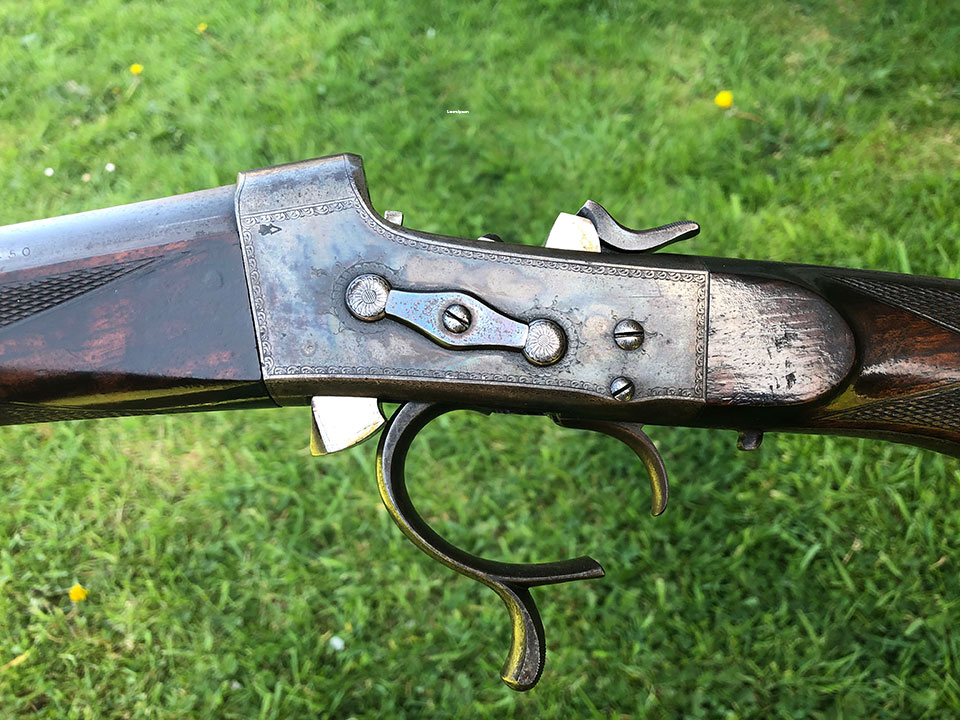
The heyday of the Army & Navy CSL was from the 1880s until the second World War. The war hit the business hard, as did the loss of India to the Empire, as British overseas territories were granted independence. The last overseas store, in Bombay, closed in 1952.
So much for the trading history, what of the guns and rifles? Clearly, Army & Nay was a retail concern, not a manufacturer of firearms, campaign furniture, cosmetics, stationary, cook-ware or any of the other thousands of items that comprised its range of goods.
The firearms were made by the big factories, mostly in Birmingham, but also some Belgian and German firms likely contributed. It is true that a lot of the sporting guns sold were of the plainer variety, intended as tools to be used hard for many years in far-flung outposts, rather than statement pieces to be used on English country estates, but it is wrong to think of Army & Navy as purveyors of poor quality.
Their clientele was generally well-prepared, well informed and selective. They may often have eschewed the more elaborate decoration found on many ‘best’ sporting guns but they required quality and reliability and could recognise it.
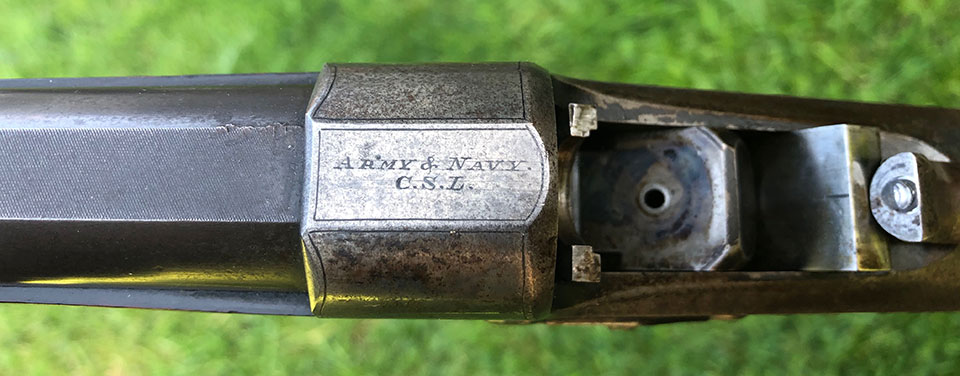
This rifle is a perfect example of unostentatious quality. The colour case hardened action is magnificently robust, with large limbs perfectly engineered to work faultlessly in harsh conditions for years, with minimal maintenance. The pistol-grip stock is bolstered through the weakest part with a heavy top strap, extending to the back of the chequer and a corresponding extension of the action running parallel to protect the lower edge. The fore-end is permanently attached (requiring a turn-screw to remove it).
It is finished with a horn finial cap. This might appear to be a frippary, but horn will not splinter, whereas the open grain at the end of a piece of wood will gradually become exposed and open with use, making it prone to catching and tearing off splinters of wood. Horn capping prevents this.
The rifle is loaded by means of a very strong and thick lever, which is integral with the trigger guard. Push it forward and the single, central hammer is cocked back. The same movement causes the rolling-block to move back and reveal the chamber and the extractor to pull out any fired cartridge. When closed, the lever/guard snaps into a locked position where it meets a friction-fit block. It has a marvellously re-assuring solidity about it and is beautifully filed and shaped to make every operation feel strong and secure. Of course, a sporting rifle also needs to feel well-balanced and comfortable to use.
In this regard, the .450 does not disappoint. The progressively stepped profile means that the sights align perfectly when the rifle is brought to the shoulder and the weight distribution allows it to sit in the hand with a re-assuring degree of steadiness. The platinum inset in the ramp sight makes it easily visible and the corresponding platinum lines guide the eye up the leaf sight to the bottom of the ‘V’, aligning the sights clearly.
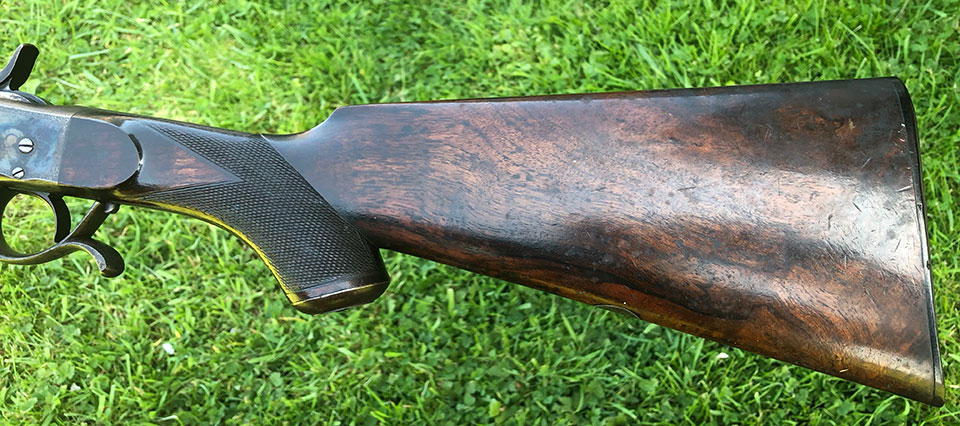
Embarking on an overseas career with this rifle stowed, I’d feel I had a tool that could deal with all the needs I might have of game-getting, predator hunting and dispatching the odd restless native, if necessary. A rifle that had sufficient stopping power, range and accuracy to be adapted to most situations, made on a system that would work for decades of hard use without developing any irritating niggles and not susceptible to the rigours of temperature, humidity and dust it would surely encounter. It very closely resembles the Remington rolling-block rifles which did such sterling service in the American West.
More than that, the rifle is very pleasing to behold. The wood is a dark figured, dense, high-quality walnut, beautifully shaped and chequered, with a horn butt-plate and perfect wood-to-metal jointing. The finish may be subtle but this rifle is of the highest quality.
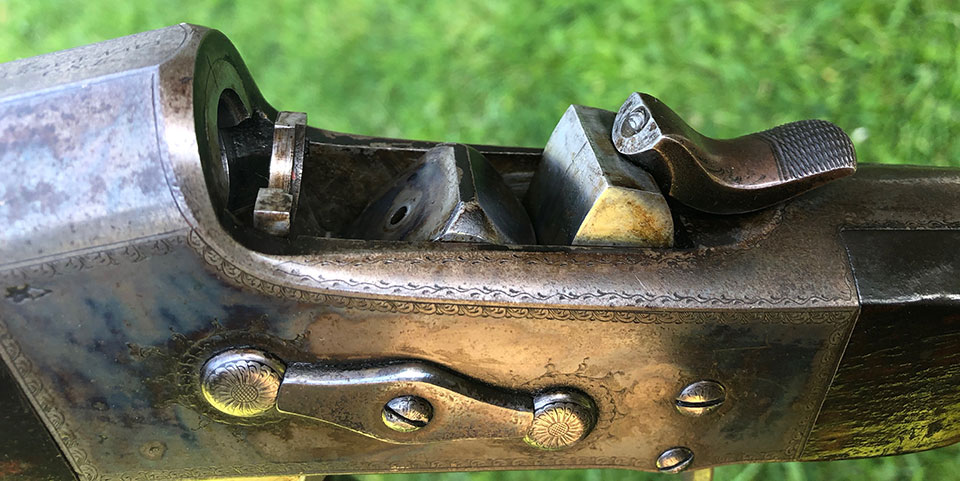
The serial number dates it to the 1890-1896 period and it has a London View mark on the action. Though the striker has been removed, the rifle is otherwise in superb, unrestored condition. The rifling is very clean and un-worn. The Black Powder Express, in a .450 3 1/4” case was a popular cartridge in the late 19th century, considered sufficient, if used with skill, to tackle all medium and dangerous game animals, using a 365 grain bullet, pushed at 1,700 fps.
Today, nitro-for-black loads are available from Kynoch and with minimal effort, the old Army & Navy could, again, become the pride and joy of a practical deer hunter in a country where our own arbitrary restrictions on hunting calibres are not imposed on people.
Published by Vintage Guns Ltd on




